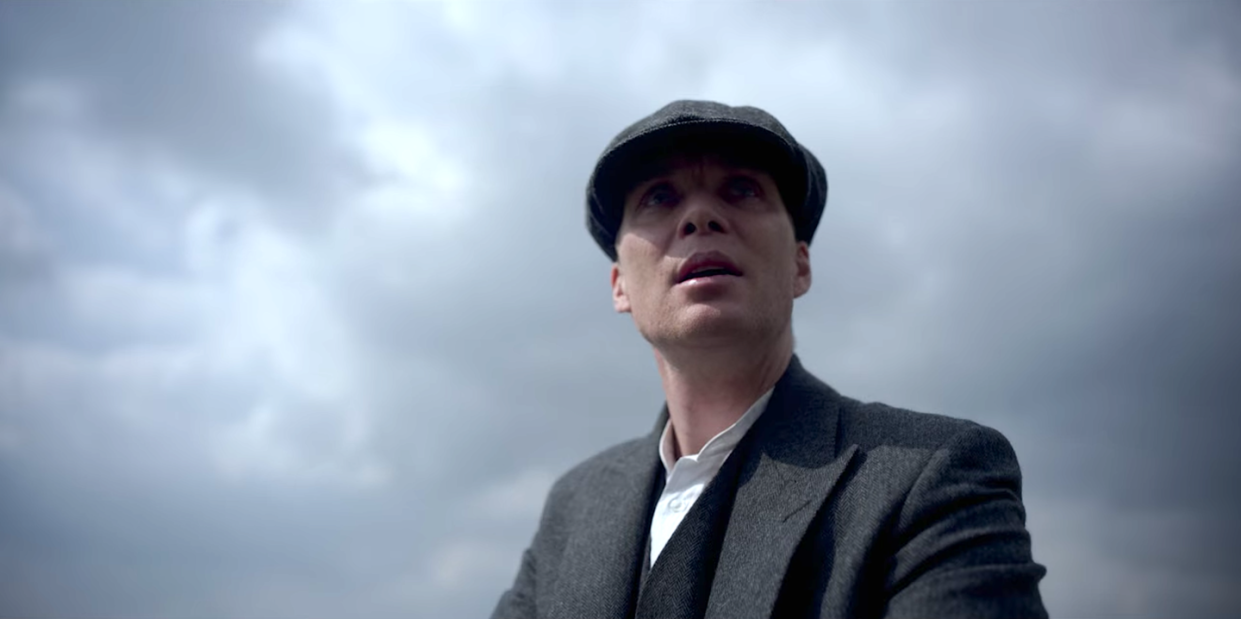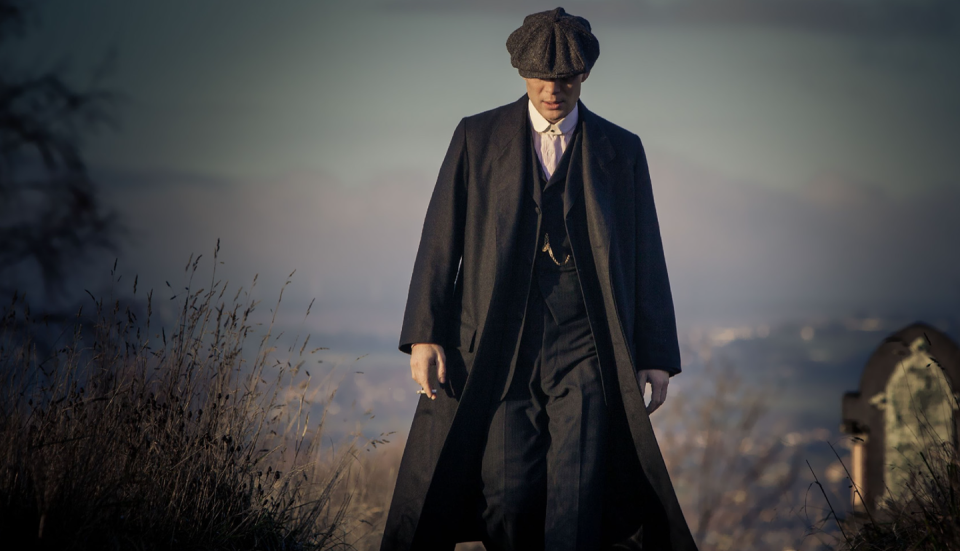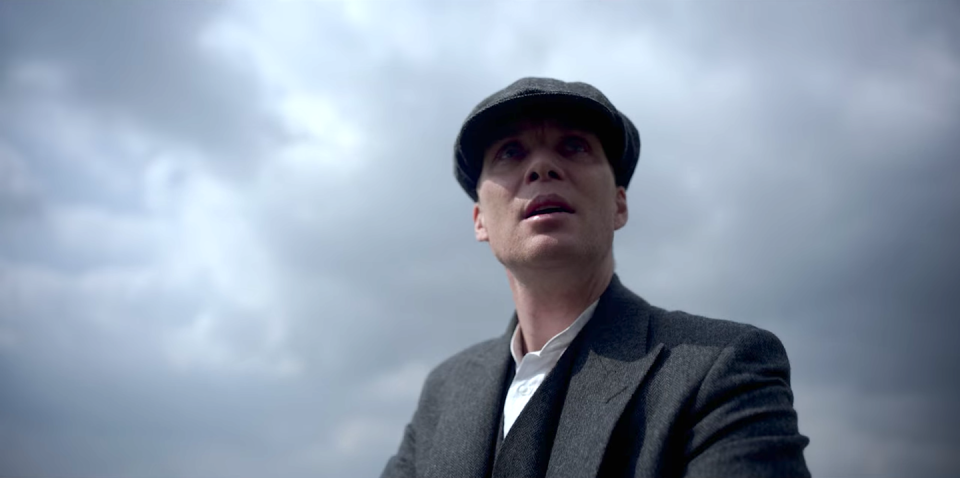The ‘Peaky Blinders’ Season 6 Ending Sets Up a Future Movie

- Oops!Something went wrong.Please try again later.
The following story frequently references suicidal acts. For help, call or text 1-800-273-8255.
Suicidality figures prominently into the final season of Peaky Blinders. The death drive is everywhere.
The season opens where the previous left off: Tommy Shelby (Cillian Murphy) stumbling into the fog before putting a gun to his head. That gun, it turns out, isn’t loaded; Lizzie emptied the bullets. But Tommy still pulls the trigger, lying down in the mud where so many of his nightmares end. Lizzie drops the bullets by his head, calling Tommy a coward for trying to abandon them—and not a real “soldier.” Tommy picks up the muddy bullets and heads home. End of scene 1.
That gun—the Colt 1911—becomes something of a Chekhovian rifle in Season 6. It’s the first weapon shown in the season and the last one Tommy uses (though, not in the way we expect). The gun is mostly meant for Tommy himself. He keeps the bullets so that he might ceremoniously kill himself when the final job is done—which seems to be ensuring financial security for his family (that whole killing-the-fascists thing TBD). His diagnosis midway through the season makes this final act of annihilation imminent. After the deal with Boston, Tommy is finally ready. He takes the gun and heads for the hills, gathering his belongings in a wagon. He prepares to orchestrate his own funeral.
But then some trippy dream stuff happens and the ultimate use of the Colt 1911 changes.
There are two primary scenes that mark the ending of the series: the scene where Tommy confronts Dr. Holford and the scene where Tommy watches his wagon burn.
Let’s break them down.
Why Tommy Doesn’t Kill Holford

The hallucination sequence occurs right as Tommy begins the suicide act. He hears his daughter.
An apparition of Ruby tells Tommy to tend to the fire. In the pit, Tommy finds a news clipping and photo of Oswald Mosley and Lady Diana’s Berlin wedding (supposedly attended by Hitler). In the photo, Tommy also finds his doctor, Holford, who told Tommy about his Tuberculoma diagnosis. Holford, it seems, is a member of England’s fascist party. While Tommy has allied himself with the party hoping to destroy fascism from the inside, it seems there is already a plot in progress against him. Already, the fascist-leaning side of the IRA has tried to kill Arthur. Holford’s relationship with Mosley convinces Tommy that the diagnosis was a ruse to force him to commit suicide. (The only person who can kill Tommy Shelby, Tommy Shelby concludes, is Tommy Shelby.) He aborts the suicide attempt and goes after Holford—who conveniently lives down the hill.
Holford pleads for his life, telling Tommy that Tommy is no longer someone who would shoot someone in cold blood. Tommy doesn’t seem to buy this reading of Tommy, but he spares Holford for another reason.
As Tommy considers killing Holford, a clock tower strikes eleven. Tommy then says, “Eleventh hour. Armistice. Peace at last.” The statement is an allusion to the First World War; Armistice was declared on the eleventh hour of the eleventh day of the eleventh month—11/11/1918—marking the end of the war. As Tommy’s experiences in the tunnels of France mark a continued incubus for his character, with visions of being pulled into the mud, the sounding of the bell coincides with his own inner peace.
“I am back,” he tells Holford. “Back from underground.” Meaning: back from the tunnels in France. The moment is probably best taken symbolically—not that Tommy somehow overcome his PTSD from the war. Instead, the moment appears to be one of renewal and rebirth.
Still, it’s a bit unclear why Tommy doesn’t kill Holford. While Tommy seems to have entered some kind of Zen, there is still unfinished business. Mosley remains a threat to England and to Tommy’s family. Holford will also likely tell Mosley that Tommy is alive, spoiling any strategic advantage.
We’re made to read this moment as a rebirth for Tommy, however, one in which he is no longer haunted by his experiences in the War. The rebirth images are reinforced in the next scene.
Tommy and the White Horse

Holford’s man walks into the hills to deal with the “fucking gypsies” that Holford mentioned at the beginning of the scene—who, unknown to Holford, is Tommy. The man pours gasoline over the wagon, sets it ablaze, and then hustles off. Tommy, having returned from not killing Holford, watches the wagon and all his belongings burn. He then mounts a white horse and appears to grin as he gallops off. The final shot is seen from inside the burning wagon, Tommy and his horse blocked as a frame within a frame (outlined by the door of the wagon.) Once Tommy turns to the hills, the wagon collapses in front of the frame like a falling curtain of burning wood. Roll credits.
The scene immediately calls back the opening of the series, when Tommy rode through Birmingham on a black horse. For most of the series, Tommy rides “Dangerous,” a black horse. He shoots Dangerous in Season 5 next to a dead Grace. In the same season, Tommy learned about his mother’s suicide; she drowned herself in a lake. He also learned about a white horse that his mother would watch Tommy ride.
Tommy’s transition from black to white horse is another image of rebirth—a return to his childhood and to the personhood before the War—as is the burning of his belongings, his past life. His abortion of the suicide act also seems to break a chain of similar events beginning with his mother.
While this might seem like a satisfying conclusion to the character, again, the story is not done; Mosley and the fascists still pose a threat to Tommy’s family and to Europe. Tommy riding off into the hills feels more like the beginning of a final chapter, rather than the end of one.
When speaking about the final season, creator Steven Knight said that “[It] will tell a different story, where Tommy Shelby—who begins as this nihilistic, looking-out only for his family person—will be redeemed, and he will become good.”
The entire Season 6 finds Tommy mostly looking out for Tommy and his family, his final act to secure financial stability for the Shelbys. Knight's statement, however, came before he decided to cap the series with a sixth season. The proposed redemption was to come in Season 7. That season will now be a film.
Peaky Blinders will be back for a movie sometime in the coming years. We'll likely find this redemption—Tommy becoming "good"—during the film. Perhaps his final act will be one of sacrifice and selflessness, where he acts not for his family, but for Europe. There are still more enemies to take down, after all. And some unused bullets. The last possession Tommy carries after the fire: that Colt 1911.
You Might Also Like

